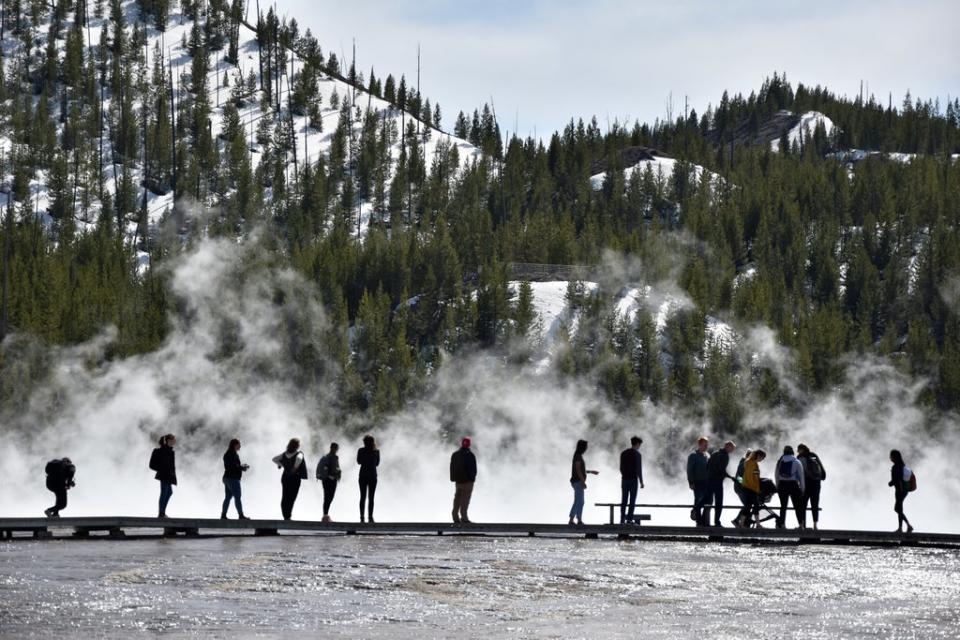In Wyoming, where Gabby Petito’s body was found, Indigenous people campaign for their missing

The tragic case of Gabby Petito is not lost on the Indigenous people in the Wyoming area. Many of them still wait to hear what happened to their missing or murdered loved ones without answers.
Since 2011, 710 Indigenous persons have been reported missing in 22 counties, 57 percent of them female. Many families never found their loved ones and still seek answers. After the past decade came and went without much change in solving these crimes, local citizens took action which sparked much-needed discussion.
In the United States, four out of five Indigenous people have experienced violence. For the women, most of the perpetrators were of other races.
In 2019, students and community organizers decided enough was enough and organized a significant event to get the attention of lawmakers and citizens. It worked.
Keepers of the Fire, an organization to preserve Native American culture at the University of Wyoming, sponsored a March for Justice. Community members shared personal stories of missing loved ones to raise awareness for the murdered or missing women and girls. This caught the attention of Governor Mark Gordon, who convened a task force to look into how the state could assist in addressing the problem with communities and law enforcement.
The University of Wyoming Survey and Analysis Center, along with the state’s Attorney General’s Division of Victim Services, developed the Missing and Murdered Indigenous People State Report. It compiled data from numerous sources and looked into the Indigenous missing persons and homicide victims within Wyoming. Interviewed members were kept anonymous in the study.
The report focused on homicides, missing persons, media coverage compared to other races, and interviews with tribal community members. Communication was studied across the board. It also analyzed data from National Crime Information Center (NCIC) and National Missing and Unidentified Persons System (NamUs) along with other databases nationwide to see how information could be added regarding Indigenous homicides and missing persons. Almost half of homicides between 1999 and 2017 were missing from FBI and other agency databases.
A member of the Wind River Indian Reservation stated, “This is a big issue and not a lot of people are aware of it because it doesn’t affect them, but when it happens, it doesn’t affect just the family. It affects the whole community.”
Though recent public response has been supportive to the plight of Indigenous people, the media has either not covered the stories at all, or victims were portrayed less favorably than other races. Several areas of reporting were problematic, including how the crimes were presented to the public. Numerous articles analyzed found scenes of Indigenous homicide victims used graphic, “violent language” such as “blood coming from his nose and mouth” or “he had a stab wound in his lower right abdominal area”. White victims of similar violence had their homicides described in more sanitized ways, such as: “They left the body in a ditch.”
Tribal members in the community were interviewed, and acknowledged that a lack of trust between themselves and outsiders needed to be addressed. For some, the research was too late after years of waiting on a judicial process that never came. One member said, “We’re second class. So we might find out. We might get this person by ourselves, someday, whenever. People out here don’t expect that something’s gonna be solved quickly ‘cause it isn’t.”
Another noted, “I want people in this state to remember that the citizens of the Wind River Reservation are citizens of Wyoming as well and deserve a voice in our government, and they deserve a voice to be treated like citizens.”
When the report was released, it came with numerous recommendations including the need for state, federal, and local policymakers to consider improved protocol and data systems, designated representatives for indigenous victims and families, and further awareness initiatives.
In February, Governor Gordon acknowledged the number of cases open and the families still waiting for justice. “This report captures state-specific data on crimes against Native Americans in Wyoming, many of which tragically remain unsolved,” he said.
Though generational trauma and misgivings about the government are still a factor, others recognize the need to continue the dialogue on every level, so that all voices have a chance to be heard. Collaboration within and outside of the community will be necessary to garner the best, most complete answers from any law enforcement agency.
Further recommendations from the study included documenting tribal affiliation in official records, coroner reports, and vital records, to create an Indigenous advocacy position and/or response team to help families navigate the reporting and investigation process. Such family members need an advocate who can serve as a point person to help reduce the emotional stress of relaying incident details to multiple agencies.
The statistics and data gathered by the state for Indigenous people are not just relevant in Wyoming. They matter to those living in other states as well. But for those who continue to wait for word, it’s a start.
Read More
Gabby Petito live: Police note found on Brian Laundrie’s car
What has happened to Gabby Petito? Everything we know so far
A timeline of the disappearance of Gabby Petito
Opinion: Labour has taken a vital step towards tackling antisemitism
Biden didn’t stay long at the UN General Assembly. Republicans are delighted
Starmer should be picking fights with the Tories – not his own members | Diane Abbott

 Yahoo News
Yahoo News 